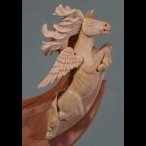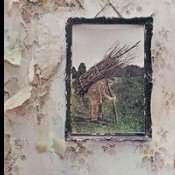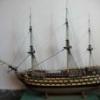Supplies of the Ship Modeler's Handbook are running out. Get your copy NOW before they are gone! Click on photo to order.
×
-
Posts
9,449 -
Joined
-
Last visited
Reputation Activity
-
 Chuck got a reaction from woodartist in Medway Longboat 1742 by MajorChaos - 1:24 scale
Chuck got a reaction from woodartist in Medway Longboat 1742 by MajorChaos - 1:24 scale
Pre-bending with heat and even wetting down the plank a bit using a hair dryer is the better way to go. Force bending it dry makes it so much tougher to get a nice fit. You will also get lots of dents and imperfections with all of those pins.
-
 Chuck got a reaction from yvesvidal in Sloop Speedwell 1752 by Chuck - Ketch Rigged Sloop - POF - prototype build
Chuck got a reaction from yvesvidal in Sloop Speedwell 1752 by Chuck - Ketch Rigged Sloop - POF - prototype build
Oh its scary…one slip up and it will be hard to fix. But that is true when you drill hawse holes and scuppers on any model. A year of hard work and one slip up…poofff.
-
 Chuck got a reaction from KARAVOKIRIS in Sloop Speedwell 1752 by Chuck - Ketch Rigged Sloop - POF - prototype build
Chuck got a reaction from KARAVOKIRIS in Sloop Speedwell 1752 by Chuck - Ketch Rigged Sloop - POF - prototype build
While I was away, I had taken a bunch of milled cedar strips of various widths. All were 3/64" thick. I spent my evenings planking the decks which was quite nice and relaxing. My wife was also enjoying some wine from the local vineyards while working on her own relaxing projects while overlooking the Long Island Sound.
Not much to say about how to plank the decks as the gun deck and poop were planked like any other deck. Just taper the strips following the provided deck plans. You must cut around the hatches and coamings as usual. These were the most difficult planks to cut but not awful. It just takes careful planning and cutting.
These were the last two planks which I waiting to return home so I could photograph them before gluing them in permanently.
Here are some photos of the completed deck planking. The forecastle deck planks were cut from a 3/64" sheet because of their curvature as I mentioned. But the gun deck and poop were planked with strips. The curves are not that severe and it was a lot easier this way. Note the gentle curve of the planks.
NOW...how much deck planking should be added. Its really just a personal decision. What do like more....or less.
I have an extra strake on the gun deck where the cannon will be located. I dont particularly like when the carriage trucks are hanging over the edge if there were too few strakes. But maybe you are OK with that. This planking scheme matches the plans I provided but you guys can change to suit your sensibilities. Looking at the photos you can see why I omitted all of the deck knees (hanging and lodging). You can try really hard but would ever be able to see even a whisper of them. It just doesnt make sense to add them with this planking layout. I hope you will agree.
Next up will be something I have been blissfully ignoring. Its a bit terrifying for any ship modeler. I will be drilling the scupper holes and hawse holes. Usually I drill the scuppers after adding the waterway. But this usually chips and frays the waterway. So I am going to try something new. I will drill the scuppers first and then add the waterway strip. I will mark and file the waterway strip so it will hopefully not get damaged. We shall see.
The hawse holes are a different story. Those will require some really careful planning.
But waiting any longer to do these will only make them more terrifying.
Chuck
-
 Chuck got a reaction from cotrecerf in Sloop Speedwell 1752 by Freebird (Rick) - Syren Ship Model Company - 1:32 Scale - POF
Chuck got a reaction from cotrecerf in Sloop Speedwell 1752 by Freebird (Rick) - Syren Ship Model Company - 1:32 Scale - POF
Nice save....I have a bit of room on that sheet so I have added a second pair of those parts 9 & 10 just in case. Best to have a back up... I am watching the current builds closely so I can add extra back up pieces based on which ones might need it if room on the sheet allows.
-
 Chuck got a reaction from Blue Ensign in Medway Longboat 1742 by Blue Ensign - FINISHED - Syren Ship Model Company - ½” scale
Chuck got a reaction from Blue Ensign in Medway Longboat 1742 by Blue Ensign - FINISHED - Syren Ship Model Company - ½” scale
Looking lovely. I forgot what a beautiful shape this longboat has. Yours is showing that elegant form very well.
-
 Chuck reacted to druxey in Sloop Speedwell 1752 by Chuck - Ketch Rigged Sloop - POF - prototype build
Chuck reacted to druxey in Sloop Speedwell 1752 by Chuck - Ketch Rigged Sloop - POF - prototype build
For scuppers: My method (waterway in place) is, first accurate mark-out both inboard and out. Drill with a very small diameter bit from both sides. Hopefully the holes will meet - at least partially. Then progressively enlarge using larger diameter bits and needle files, making minor corrections as you go until you reach the diameter of the scupper.
I've not drilled hawseholes in years. I file the half-holes in the hawse pieced before assembly. Again, I make them slightly under final size, then file them out once planking is complete.
-
 Chuck got a reaction from FrankWouts in Sloop Speedwell 1752 by Chuck - Ketch Rigged Sloop - POF - prototype build
Chuck got a reaction from FrankWouts in Sloop Speedwell 1752 by Chuck - Ketch Rigged Sloop - POF - prototype build
Thank you guys...we leave tomorrow.
Yes I am headed out to the north and south fork of Long Island. Gonna check out some maritime stuff including some museums that have small boat collections. Still researching that block island Cowhorn. There is supposed to be a nice one in the museum there. I will be online using my phone though....me always needs some MSW time....lol.
Planking has started...today.
The facstle is completed. Nothing to really add except that I followed the planking scheme provided on the plans. You can see that here. You guys may of course change it. I cut these from a 3/64" sheet following the plans rather than use strips. There is quite a pronounced curve to these and they are small enough so it wasnt a chore. I basically traced the plan sheet. Tweaked and sanded to suit. I used a #4H pencil to simulate the caulking between the planks.
Progress below. One plank at a time. The outermost planks are the hardest but not terrible.
-
 Chuck reacted to Stuntflyer in Sloop Speedwell 1752 by Chuck - Ketch Rigged Sloop - POF - prototype build
Chuck reacted to Stuntflyer in Sloop Speedwell 1752 by Chuck - Ketch Rigged Sloop - POF - prototype build
Looking really nice, Chuck. Your progress is amazing and the ship looks aesthetically pleasing, at least to my eye.
As I recall, when I did the scuppers on Cheerful, I started with a small diameter drill that was large enough to get the point of a round needle file inside. Then I just rolled it to increase the hole size. Once the hole size was close a final drilling to even out the taper worked nicely. Like I said, as I recall. To be honest I'm not 100% sure.
-
 Chuck reacted to MajorChaos in Medway Longboat 1742 by MajorChaos - 1:24 scale
Chuck reacted to MajorChaos in Medway Longboat 1742 by MajorChaos - 1:24 scale
Well, 12-2 took just a bit longer than I planned.
Because of all the curves and bends for this one, I glued the bottom side and left the top run loose. Glued on both ends. I’ll pull it down on the top to shape it. I’ve tried water and heat, I just can’t make this one stay formed. I tried to use super glue and I clearly don’t have the technique down for that. The Titebond works good the way I work, it gives me just a bit longer work time and holds quick when not loaded.
Sometimes life just doesn’t cooperate.
I have learned if I don’t want to do something I shouldn’t force myself. Parts of this wonderful kit looks nice with my work and other parts look like I should take a belt sander to the whole thing. I’m learning and having fun.
Let’s see if I can string a few days together with work on the Medway.
Thank you for the likes and the follows in this project.
-
 Chuck got a reaction from Matt D in Sloop Speedwell 1752 by Chuck - Ketch Rigged Sloop - POF - prototype build
Chuck got a reaction from Matt D in Sloop Speedwell 1752 by Chuck - Ketch Rigged Sloop - POF - prototype build
While I was away, I had taken a bunch of milled cedar strips of various widths. All were 3/64" thick. I spent my evenings planking the decks which was quite nice and relaxing. My wife was also enjoying some wine from the local vineyards while working on her own relaxing projects while overlooking the Long Island Sound.
Not much to say about how to plank the decks as the gun deck and poop were planked like any other deck. Just taper the strips following the provided deck plans. You must cut around the hatches and coamings as usual. These were the most difficult planks to cut but not awful. It just takes careful planning and cutting.
These were the last two planks which I waiting to return home so I could photograph them before gluing them in permanently.
Here are some photos of the completed deck planking. The forecastle deck planks were cut from a 3/64" sheet because of their curvature as I mentioned. But the gun deck and poop were planked with strips. The curves are not that severe and it was a lot easier this way. Note the gentle curve of the planks.
NOW...how much deck planking should be added. Its really just a personal decision. What do like more....or less.
I have an extra strake on the gun deck where the cannon will be located. I dont particularly like when the carriage trucks are hanging over the edge if there were too few strakes. But maybe you are OK with that. This planking scheme matches the plans I provided but you guys can change to suit your sensibilities. Looking at the photos you can see why I omitted all of the deck knees (hanging and lodging). You can try really hard but would ever be able to see even a whisper of them. It just doesnt make sense to add them with this planking layout. I hope you will agree.
Next up will be something I have been blissfully ignoring. Its a bit terrifying for any ship modeler. I will be drilling the scupper holes and hawse holes. Usually I drill the scuppers after adding the waterway. But this usually chips and frays the waterway. So I am going to try something new. I will drill the scuppers first and then add the waterway strip. I will mark and file the waterway strip so it will hopefully not get damaged. We shall see.
The hawse holes are a different story. Those will require some really careful planning.
But waiting any longer to do these will only make them more terrifying.
Chuck
-
 Chuck got a reaction from FrankWouts in Sloop Speedwell 1752 by Chuck - Ketch Rigged Sloop - POF - prototype build
Chuck got a reaction from FrankWouts in Sloop Speedwell 1752 by Chuck - Ketch Rigged Sloop - POF - prototype build
Just a quick follow up....All of the coamings and hatches and partners are now glued onto the model. Not much to see but here are the details.
The mast partners went in first. Really important was to get them down the center line so your masts arent slanted or crooked. It is best to use a dowel or even any strip of wood near the same diameter as the masts to also check the rake of the masts to determine the position of the partners. I dont have a picture of that but you guys mostly know this already.
The main mast partners needed to have the pump tubes made before I could glue it on the model. I am only making the pump tubes below deck at this time much like Greg did on his model. I used a 1/4 x 1/4 cedar strip and marked it out to become octagonal. I used the 7-10-7 template provided on the plans. You can see it in the picture below. Then I drew lines down each side so I could begin shaving the corners. I just use a sharp #11 blade to carefully shave the corners down to the lines. Just before the lines actually. Then I use a sanding stick to finish it off. Some of you may have some machines that could do this more accurately but this works just fine.
You will notice a small length of 19 gauge black wire I inserted into the top end. This will be inserted into the holes laser cut in partners. The pump tubes are not vertical...so when glued into the bottom of the mast partner I created the slant for these using the plans as a guide.
Then it was just a matter of gluing the main mast partners onto the model. You can barely see these pump tubes under the partners but here is a bad photo showing them entering the well below deck. We will make the top half of the pumps much later and the same holes on the mast partners will be used to register them so they look continuous through the deck. So dont make the wire too long on the top of the tubes. Make them short enough so some room remains to do the same when we add the top of the elm tree pumps later.
The other gratings and hatches were added down the center line permanently.
The last remaining issue was the capstan partners. We need to make the capstan drum below deck. This is easy enough. Its just a round drum that tapers. I started with a 3/8 x 3/8 strip of cedar. Then I converted that into an octagon just like we did for the pump tubes. I have provided another 7-10-7 template for this strip so you can proceed to make it an octagon.
Here is a photo after I rounded it off and tapered the octagon. I just dis this by hand but you can chock it in a hand drill or if you happen to have a lathe....have at it. The length can be taken from the plans as well as the diameter at the bottom so it fits in the capstan step below deck.
Once completed I glued the capstan partner onto the center line of the deck so the drum sits in the step nicely. You might also notice that I made the drum a certain length so there was still room in the hole of the capstan partners. This will allow me to register the actual capstan above deck after we make it. Hope that makes sense.
Thats it for now as I am off to the beach for a few days to recharge....and decompress. I will be back sometime next week ......or maybe not....
-
 Chuck got a reaction from FrankWouts in Sloop Speedwell 1752 by Chuck - Ketch Rigged Sloop - POF - prototype build
Chuck got a reaction from FrankWouts in Sloop Speedwell 1752 by Chuck - Ketch Rigged Sloop - POF - prototype build
the rings are made in the usual manner. Wrapped around a 47 drill bit and parted with a razor saw. The bent wire is much lighter and thinner gauge. In my case here…24 gauge for the split rings and 28 gauge for the codder pin bent and inserted into the deck.
-
 Chuck got a reaction from FrankWouts in Sloop Speedwell 1752 by Chuck - Ketch Rigged Sloop - POF - prototype build
Chuck got a reaction from FrankWouts in Sloop Speedwell 1752 by Chuck - Ketch Rigged Sloop - POF - prototype build
Thank you Jim...
I have completed all of the hatches, gratings and partners to be placed on deck. You have seen how the gratings were made. The two hatches are pretty similar. The only difference is they have cover boards rather than gratings within in the coamings.
The photo below shows the laser cut coamings assembled. There is no need to remove the laser char from the lap joints at the corners. In fact it probably isnt a good idea at all. They are precision cut so you end up with a perfectly squared up coaming the correct size. You can and should sand both sides of the sheet before removing these laser cut parts to clean the char from those sides. Just glue them up using the same right angle jig provided earlier. Then sand the char off the top of the completed coaming being careful to keep the round-up consistent.
You can see the smaller hatch completed. The larger one shows the three cover boards also laser cut waiting to be glued into position. But this you will also note the ledge created on the inside of the coaming that the cover boards will sit into. These are laser cut for you and can be glued on the port and starboard insides of the coaming.
This photo shows the three coverboards in the coaming. They are pretty thick, but only so they are flush with the center of the coaming to allow for the round-up. The round-up along the sides of the coverboards should be sanded flush to the top edge of the coamings along the P & S sides. I know some folks like to show one or two coverboards off the coaming. You can do this if you want to. But then you should sand that roundup into the bottom of the coverboards as well. But I will show them all in place like the contemporary model.
To finish off the hatches...round off the corners using the right angle jig like you did for the gratings. Trim them down to the top of the deck planking. The bolts were added using black fishing line in the same way. The iron ring for handles were made just like those on the lower platforms. Exactly the same.
Also shown in the photo above are the mast and capstan partners. These are completely laser cut for you. They have etched lines to show the separate sections. All you have to do is sand them clean and round off the corners as described earlier for the capstan partners only. Soften the top edges as well. Add the fishing line bolts and the eye bolts on the main mast partners. Now some of these can be glued onto the model. They are all ready to go so you can start planking the decks.
BUT there are a some like the main mast partners and capstan partners that need some extra work. I will describe that next. For example the elm pump tubes below the main mast partners and the capstan drum as well.
More to follow...but here is a photo with the all of the hatches, coamings and partners simply test positioned on the model. They are not glued into position yet. I did however glue the smaller grating and coaming on the forecastle deck in permanently....those are all finished up. Its getting there!!!
-
 Chuck reacted to glbarlow in HMS Winchelsea 1764 by glbarlow - FINISHED - 1:48
Chuck reacted to glbarlow in HMS Winchelsea 1764 by glbarlow - FINISHED - 1:48
Only the swivel guns to go to finish Chapter 11. A quick update on what was the long process of adding the chain plates to fix the deadeyes to the channels. Basically a lot of holes to drill in a straight, level, and angled lines.
Another exercise in patience, planning. placing, and adjusting each of the three mast sections of channels and deadeyes
I am a big fan of the acrylic strops and chainplates - so much easier and such a much better look than fighting through their metal equivalents. I’m not going back.
I also had a new opportunity to make many eyelets along the hull following the plans. At this point the twist around the drill bit in the vice and the cut, snip, fit is mindless, easy work. Maybe someday I’ll count how many I’ve made for Winchelsea - or maybe not.
The model is transformed with these additions - looking completely like a ship at this point (don’t look at the stem, that’s Chapter 12). It’s really quite something. I'm going to take some better photos after I finish Chpt 11. I still haven't glued in the remaining guns, but that's coming up soon.
Thanks for stopping by - some swivel guns are up next.
-
 Chuck got a reaction from GrandpaPhil in Sloop Speedwell 1752 by Chuck - Ketch Rigged Sloop - POF - prototype build
Chuck got a reaction from GrandpaPhil in Sloop Speedwell 1752 by Chuck - Ketch Rigged Sloop - POF - prototype build
While I was away, I had taken a bunch of milled cedar strips of various widths. All were 3/64" thick. I spent my evenings planking the decks which was quite nice and relaxing. My wife was also enjoying some wine from the local vineyards while working on her own relaxing projects while overlooking the Long Island Sound.
Not much to say about how to plank the decks as the gun deck and poop were planked like any other deck. Just taper the strips following the provided deck plans. You must cut around the hatches and coamings as usual. These were the most difficult planks to cut but not awful. It just takes careful planning and cutting.
These were the last two planks which I waiting to return home so I could photograph them before gluing them in permanently.
Here are some photos of the completed deck planking. The forecastle deck planks were cut from a 3/64" sheet because of their curvature as I mentioned. But the gun deck and poop were planked with strips. The curves are not that severe and it was a lot easier this way. Note the gentle curve of the planks.
NOW...how much deck planking should be added. Its really just a personal decision. What do like more....or less.
I have an extra strake on the gun deck where the cannon will be located. I dont particularly like when the carriage trucks are hanging over the edge if there were too few strakes. But maybe you are OK with that. This planking scheme matches the plans I provided but you guys can change to suit your sensibilities. Looking at the photos you can see why I omitted all of the deck knees (hanging and lodging). You can try really hard but would ever be able to see even a whisper of them. It just doesnt make sense to add them with this planking layout. I hope you will agree.
Next up will be something I have been blissfully ignoring. Its a bit terrifying for any ship modeler. I will be drilling the scupper holes and hawse holes. Usually I drill the scuppers after adding the waterway. But this usually chips and frays the waterway. So I am going to try something new. I will drill the scuppers first and then add the waterway strip. I will mark and file the waterway strip so it will hopefully not get damaged. We shall see.
The hawse holes are a different story. Those will require some really careful planning.
But waiting any longer to do these will only make them more terrifying.
Chuck
-
 Chuck got a reaction from Trussben in Sloop Speedwell 1752 by Chuck - Ketch Rigged Sloop - POF - prototype build
Chuck got a reaction from Trussben in Sloop Speedwell 1752 by Chuck - Ketch Rigged Sloop - POF - prototype build
While I was away, I had taken a bunch of milled cedar strips of various widths. All were 3/64" thick. I spent my evenings planking the decks which was quite nice and relaxing. My wife was also enjoying some wine from the local vineyards while working on her own relaxing projects while overlooking the Long Island Sound.
Not much to say about how to plank the decks as the gun deck and poop were planked like any other deck. Just taper the strips following the provided deck plans. You must cut around the hatches and coamings as usual. These were the most difficult planks to cut but not awful. It just takes careful planning and cutting.
These were the last two planks which I waiting to return home so I could photograph them before gluing them in permanently.
Here are some photos of the completed deck planking. The forecastle deck planks were cut from a 3/64" sheet because of their curvature as I mentioned. But the gun deck and poop were planked with strips. The curves are not that severe and it was a lot easier this way. Note the gentle curve of the planks.
NOW...how much deck planking should be added. Its really just a personal decision. What do like more....or less.
I have an extra strake on the gun deck where the cannon will be located. I dont particularly like when the carriage trucks are hanging over the edge if there were too few strakes. But maybe you are OK with that. This planking scheme matches the plans I provided but you guys can change to suit your sensibilities. Looking at the photos you can see why I omitted all of the deck knees (hanging and lodging). You can try really hard but would ever be able to see even a whisper of them. It just doesnt make sense to add them with this planking layout. I hope you will agree.
Next up will be something I have been blissfully ignoring. Its a bit terrifying for any ship modeler. I will be drilling the scupper holes and hawse holes. Usually I drill the scuppers after adding the waterway. But this usually chips and frays the waterway. So I am going to try something new. I will drill the scuppers first and then add the waterway strip. I will mark and file the waterway strip so it will hopefully not get damaged. We shall see.
The hawse holes are a different story. Those will require some really careful planning.
But waiting any longer to do these will only make them more terrifying.
Chuck
-
 Chuck got a reaction from JeffT in Sloop Speedwell 1752 by Chuck - Ketch Rigged Sloop - POF - prototype build
Chuck got a reaction from JeffT in Sloop Speedwell 1752 by Chuck - Ketch Rigged Sloop - POF - prototype build
While I was away, I had taken a bunch of milled cedar strips of various widths. All were 3/64" thick. I spent my evenings planking the decks which was quite nice and relaxing. My wife was also enjoying some wine from the local vineyards while working on her own relaxing projects while overlooking the Long Island Sound.
Not much to say about how to plank the decks as the gun deck and poop were planked like any other deck. Just taper the strips following the provided deck plans. You must cut around the hatches and coamings as usual. These were the most difficult planks to cut but not awful. It just takes careful planning and cutting.
These were the last two planks which I waiting to return home so I could photograph them before gluing them in permanently.
Here are some photos of the completed deck planking. The forecastle deck planks were cut from a 3/64" sheet because of their curvature as I mentioned. But the gun deck and poop were planked with strips. The curves are not that severe and it was a lot easier this way. Note the gentle curve of the planks.
NOW...how much deck planking should be added. Its really just a personal decision. What do like more....or less.
I have an extra strake on the gun deck where the cannon will be located. I dont particularly like when the carriage trucks are hanging over the edge if there were too few strakes. But maybe you are OK with that. This planking scheme matches the plans I provided but you guys can change to suit your sensibilities. Looking at the photos you can see why I omitted all of the deck knees (hanging and lodging). You can try really hard but would ever be able to see even a whisper of them. It just doesnt make sense to add them with this planking layout. I hope you will agree.
Next up will be something I have been blissfully ignoring. Its a bit terrifying for any ship modeler. I will be drilling the scupper holes and hawse holes. Usually I drill the scuppers after adding the waterway. But this usually chips and frays the waterway. So I am going to try something new. I will drill the scuppers first and then add the waterway strip. I will mark and file the waterway strip so it will hopefully not get damaged. We shall see.
The hawse holes are a different story. Those will require some really careful planning.
But waiting any longer to do these will only make them more terrifying.
Chuck
-
 Chuck got a reaction from yvesvidal in Sloop Speedwell 1752 by Chuck - Ketch Rigged Sloop - POF - prototype build
Chuck got a reaction from yvesvidal in Sloop Speedwell 1752 by Chuck - Ketch Rigged Sloop - POF - prototype build
While I was away, I had taken a bunch of milled cedar strips of various widths. All were 3/64" thick. I spent my evenings planking the decks which was quite nice and relaxing. My wife was also enjoying some wine from the local vineyards while working on her own relaxing projects while overlooking the Long Island Sound.
Not much to say about how to plank the decks as the gun deck and poop were planked like any other deck. Just taper the strips following the provided deck plans. You must cut around the hatches and coamings as usual. These were the most difficult planks to cut but not awful. It just takes careful planning and cutting.
These were the last two planks which I waiting to return home so I could photograph them before gluing them in permanently.
Here are some photos of the completed deck planking. The forecastle deck planks were cut from a 3/64" sheet because of their curvature as I mentioned. But the gun deck and poop were planked with strips. The curves are not that severe and it was a lot easier this way. Note the gentle curve of the planks.
NOW...how much deck planking should be added. Its really just a personal decision. What do like more....or less.
I have an extra strake on the gun deck where the cannon will be located. I dont particularly like when the carriage trucks are hanging over the edge if there were too few strakes. But maybe you are OK with that. This planking scheme matches the plans I provided but you guys can change to suit your sensibilities. Looking at the photos you can see why I omitted all of the deck knees (hanging and lodging). You can try really hard but would ever be able to see even a whisper of them. It just doesnt make sense to add them with this planking layout. I hope you will agree.
Next up will be something I have been blissfully ignoring. Its a bit terrifying for any ship modeler. I will be drilling the scupper holes and hawse holes. Usually I drill the scuppers after adding the waterway. But this usually chips and frays the waterway. So I am going to try something new. I will drill the scuppers first and then add the waterway strip. I will mark and file the waterway strip so it will hopefully not get damaged. We shall see.
The hawse holes are a different story. Those will require some really careful planning.
But waiting any longer to do these will only make them more terrifying.
Chuck
-
 Chuck got a reaction from Ryland Craze in Sloop Speedwell 1752 by Chuck - Ketch Rigged Sloop - POF - prototype build
Chuck got a reaction from Ryland Craze in Sloop Speedwell 1752 by Chuck - Ketch Rigged Sloop - POF - prototype build
Oh its scary…one slip up and it will be hard to fix. But that is true when you drill hawse holes and scuppers on any model. A year of hard work and one slip up…poofff.
-
 Chuck got a reaction from tlevine in Sloop Speedwell 1752 by Chuck - Ketch Rigged Sloop - POF - prototype build
Chuck got a reaction from tlevine in Sloop Speedwell 1752 by Chuck - Ketch Rigged Sloop - POF - prototype build
While I was away, I had taken a bunch of milled cedar strips of various widths. All were 3/64" thick. I spent my evenings planking the decks which was quite nice and relaxing. My wife was also enjoying some wine from the local vineyards while working on her own relaxing projects while overlooking the Long Island Sound.
Not much to say about how to plank the decks as the gun deck and poop were planked like any other deck. Just taper the strips following the provided deck plans. You must cut around the hatches and coamings as usual. These were the most difficult planks to cut but not awful. It just takes careful planning and cutting.
These were the last two planks which I waiting to return home so I could photograph them before gluing them in permanently.
Here are some photos of the completed deck planking. The forecastle deck planks were cut from a 3/64" sheet because of their curvature as I mentioned. But the gun deck and poop were planked with strips. The curves are not that severe and it was a lot easier this way. Note the gentle curve of the planks.
NOW...how much deck planking should be added. Its really just a personal decision. What do like more....or less.
I have an extra strake on the gun deck where the cannon will be located. I dont particularly like when the carriage trucks are hanging over the edge if there were too few strakes. But maybe you are OK with that. This planking scheme matches the plans I provided but you guys can change to suit your sensibilities. Looking at the photos you can see why I omitted all of the deck knees (hanging and lodging). You can try really hard but would ever be able to see even a whisper of them. It just doesnt make sense to add them with this planking layout. I hope you will agree.
Next up will be something I have been blissfully ignoring. Its a bit terrifying for any ship modeler. I will be drilling the scupper holes and hawse holes. Usually I drill the scuppers after adding the waterway. But this usually chips and frays the waterway. So I am going to try something new. I will drill the scuppers first and then add the waterway strip. I will mark and file the waterway strip so it will hopefully not get damaged. We shall see.
The hawse holes are a different story. Those will require some really careful planning.
But waiting any longer to do these will only make them more terrifying.
Chuck
-
 Chuck got a reaction from rcweir in Sloop Speedwell 1752 by Chuck - Ketch Rigged Sloop - POF - prototype build
Chuck got a reaction from rcweir in Sloop Speedwell 1752 by Chuck - Ketch Rigged Sloop - POF - prototype build
While I was away, I had taken a bunch of milled cedar strips of various widths. All were 3/64" thick. I spent my evenings planking the decks which was quite nice and relaxing. My wife was also enjoying some wine from the local vineyards while working on her own relaxing projects while overlooking the Long Island Sound.
Not much to say about how to plank the decks as the gun deck and poop were planked like any other deck. Just taper the strips following the provided deck plans. You must cut around the hatches and coamings as usual. These were the most difficult planks to cut but not awful. It just takes careful planning and cutting.
These were the last two planks which I waiting to return home so I could photograph them before gluing them in permanently.
Here are some photos of the completed deck planking. The forecastle deck planks were cut from a 3/64" sheet because of their curvature as I mentioned. But the gun deck and poop were planked with strips. The curves are not that severe and it was a lot easier this way. Note the gentle curve of the planks.
NOW...how much deck planking should be added. Its really just a personal decision. What do like more....or less.
I have an extra strake on the gun deck where the cannon will be located. I dont particularly like when the carriage trucks are hanging over the edge if there were too few strakes. But maybe you are OK with that. This planking scheme matches the plans I provided but you guys can change to suit your sensibilities. Looking at the photos you can see why I omitted all of the deck knees (hanging and lodging). You can try really hard but would ever be able to see even a whisper of them. It just doesnt make sense to add them with this planking layout. I hope you will agree.
Next up will be something I have been blissfully ignoring. Its a bit terrifying for any ship modeler. I will be drilling the scupper holes and hawse holes. Usually I drill the scuppers after adding the waterway. But this usually chips and frays the waterway. So I am going to try something new. I will drill the scuppers first and then add the waterway strip. I will mark and file the waterway strip so it will hopefully not get damaged. We shall see.
The hawse holes are a different story. Those will require some really careful planning.
But waiting any longer to do these will only make them more terrifying.
Chuck
-
 Chuck got a reaction from Feymoon in Where do I find chuck's practicum?
Chuck got a reaction from Feymoon in Where do I find chuck's practicum?
If they dont put them back on the site I will fish around for the master CD;'s I have and place them somewhere on this site.
Chuck
-
 Chuck got a reaction from davyboy in Sloop Speedwell 1752 by Chuck - Ketch Rigged Sloop - POF - prototype build
Chuck got a reaction from davyboy in Sloop Speedwell 1752 by Chuck - Ketch Rigged Sloop - POF - prototype build
While I was away, I had taken a bunch of milled cedar strips of various widths. All were 3/64" thick. I spent my evenings planking the decks which was quite nice and relaxing. My wife was also enjoying some wine from the local vineyards while working on her own relaxing projects while overlooking the Long Island Sound.
Not much to say about how to plank the decks as the gun deck and poop were planked like any other deck. Just taper the strips following the provided deck plans. You must cut around the hatches and coamings as usual. These were the most difficult planks to cut but not awful. It just takes careful planning and cutting.
These were the last two planks which I waiting to return home so I could photograph them before gluing them in permanently.
Here are some photos of the completed deck planking. The forecastle deck planks were cut from a 3/64" sheet because of their curvature as I mentioned. But the gun deck and poop were planked with strips. The curves are not that severe and it was a lot easier this way. Note the gentle curve of the planks.
NOW...how much deck planking should be added. Its really just a personal decision. What do like more....or less.
I have an extra strake on the gun deck where the cannon will be located. I dont particularly like when the carriage trucks are hanging over the edge if there were too few strakes. But maybe you are OK with that. This planking scheme matches the plans I provided but you guys can change to suit your sensibilities. Looking at the photos you can see why I omitted all of the deck knees (hanging and lodging). You can try really hard but would ever be able to see even a whisper of them. It just doesnt make sense to add them with this planking layout. I hope you will agree.
Next up will be something I have been blissfully ignoring. Its a bit terrifying for any ship modeler. I will be drilling the scupper holes and hawse holes. Usually I drill the scuppers after adding the waterway. But this usually chips and frays the waterway. So I am going to try something new. I will drill the scuppers first and then add the waterway strip. I will mark and file the waterway strip so it will hopefully not get damaged. We shall see.
The hawse holes are a different story. Those will require some really careful planning.
But waiting any longer to do these will only make them more terrifying.
Chuck
-
 Chuck got a reaction from gjdale in Sloop Speedwell 1752 by Chuck - Ketch Rigged Sloop - POF - prototype build
Chuck got a reaction from gjdale in Sloop Speedwell 1752 by Chuck - Ketch Rigged Sloop - POF - prototype build
While I was away, I had taken a bunch of milled cedar strips of various widths. All were 3/64" thick. I spent my evenings planking the decks which was quite nice and relaxing. My wife was also enjoying some wine from the local vineyards while working on her own relaxing projects while overlooking the Long Island Sound.
Not much to say about how to plank the decks as the gun deck and poop were planked like any other deck. Just taper the strips following the provided deck plans. You must cut around the hatches and coamings as usual. These were the most difficult planks to cut but not awful. It just takes careful planning and cutting.
These were the last two planks which I waiting to return home so I could photograph them before gluing them in permanently.
Here are some photos of the completed deck planking. The forecastle deck planks were cut from a 3/64" sheet because of their curvature as I mentioned. But the gun deck and poop were planked with strips. The curves are not that severe and it was a lot easier this way. Note the gentle curve of the planks.
NOW...how much deck planking should be added. Its really just a personal decision. What do like more....or less.
I have an extra strake on the gun deck where the cannon will be located. I dont particularly like when the carriage trucks are hanging over the edge if there were too few strakes. But maybe you are OK with that. This planking scheme matches the plans I provided but you guys can change to suit your sensibilities. Looking at the photos you can see why I omitted all of the deck knees (hanging and lodging). You can try really hard but would ever be able to see even a whisper of them. It just doesnt make sense to add them with this planking layout. I hope you will agree.
Next up will be something I have been blissfully ignoring. Its a bit terrifying for any ship modeler. I will be drilling the scupper holes and hawse holes. Usually I drill the scuppers after adding the waterway. But this usually chips and frays the waterway. So I am going to try something new. I will drill the scuppers first and then add the waterway strip. I will mark and file the waterway strip so it will hopefully not get damaged. We shall see.
The hawse holes are a different story. Those will require some really careful planning.
But waiting any longer to do these will only make them more terrifying.
Chuck
-
 Chuck got a reaction from wernerweiss in Sloop Speedwell 1752 by Chuck - Ketch Rigged Sloop - POF - prototype build
Chuck got a reaction from wernerweiss in Sloop Speedwell 1752 by Chuck - Ketch Rigged Sloop - POF - prototype build
While I was away, I had taken a bunch of milled cedar strips of various widths. All were 3/64" thick. I spent my evenings planking the decks which was quite nice and relaxing. My wife was also enjoying some wine from the local vineyards while working on her own relaxing projects while overlooking the Long Island Sound.
Not much to say about how to plank the decks as the gun deck and poop were planked like any other deck. Just taper the strips following the provided deck plans. You must cut around the hatches and coamings as usual. These were the most difficult planks to cut but not awful. It just takes careful planning and cutting.
These were the last two planks which I waiting to return home so I could photograph them before gluing them in permanently.
Here are some photos of the completed deck planking. The forecastle deck planks were cut from a 3/64" sheet because of their curvature as I mentioned. But the gun deck and poop were planked with strips. The curves are not that severe and it was a lot easier this way. Note the gentle curve of the planks.
NOW...how much deck planking should be added. Its really just a personal decision. What do like more....or less.
I have an extra strake on the gun deck where the cannon will be located. I dont particularly like when the carriage trucks are hanging over the edge if there were too few strakes. But maybe you are OK with that. This planking scheme matches the plans I provided but you guys can change to suit your sensibilities. Looking at the photos you can see why I omitted all of the deck knees (hanging and lodging). You can try really hard but would ever be able to see even a whisper of them. It just doesnt make sense to add them with this planking layout. I hope you will agree.
Next up will be something I have been blissfully ignoring. Its a bit terrifying for any ship modeler. I will be drilling the scupper holes and hawse holes. Usually I drill the scuppers after adding the waterway. But this usually chips and frays the waterway. So I am going to try something new. I will drill the scuppers first and then add the waterway strip. I will mark and file the waterway strip so it will hopefully not get damaged. We shall see.
The hawse holes are a different story. Those will require some really careful planning.
But waiting any longer to do these will only make them more terrifying.
Chuck

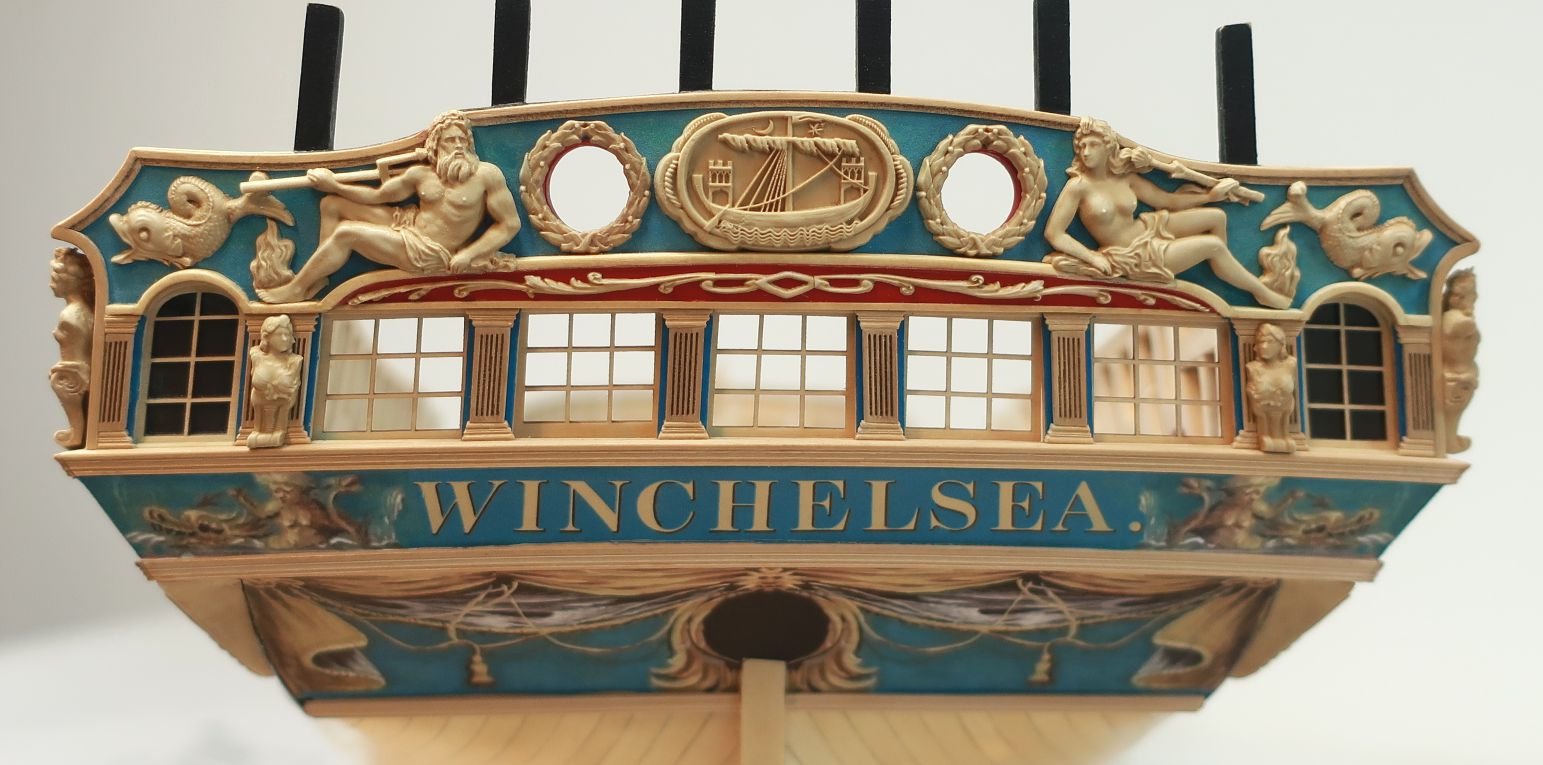
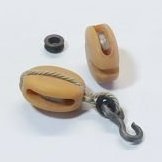





.thumb.jpg.6d6ee4bdbfaac2c58ecc77e7b80ae374.jpg)
